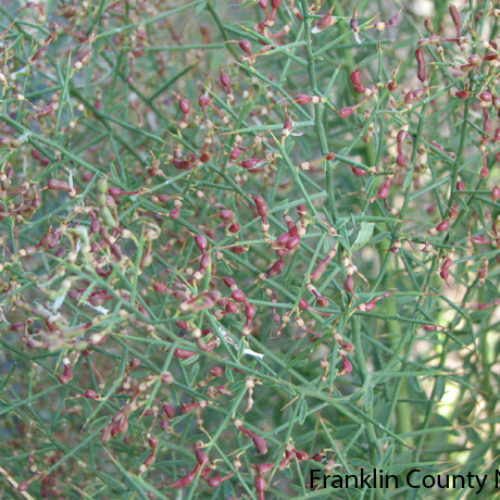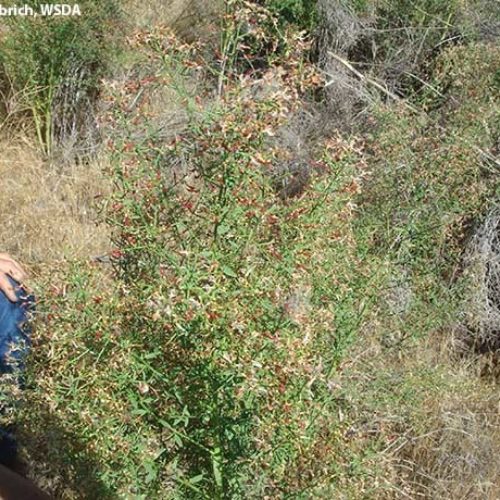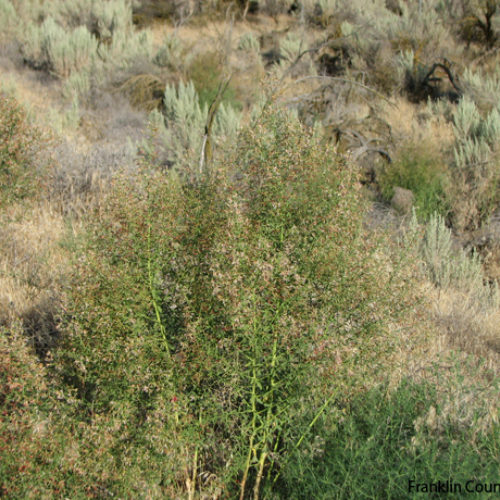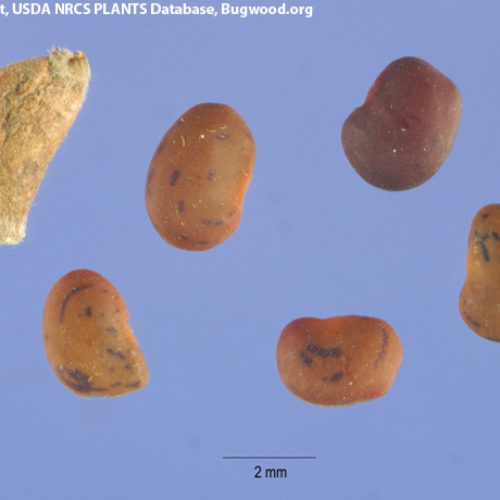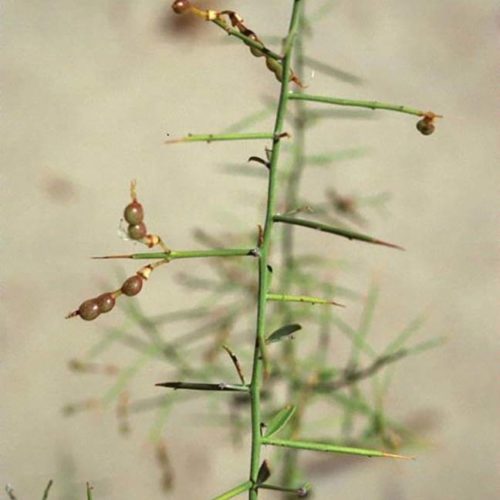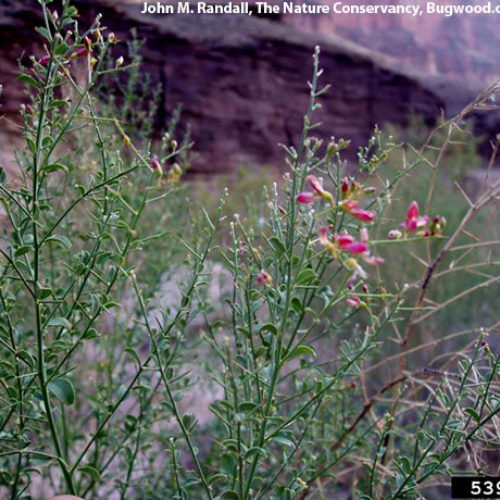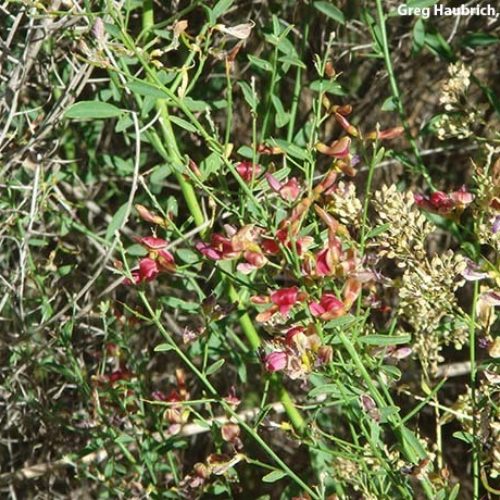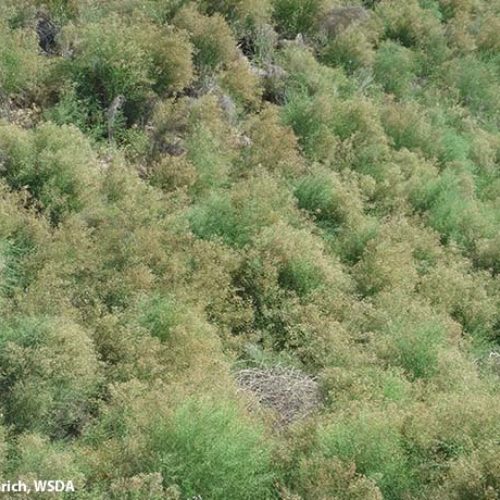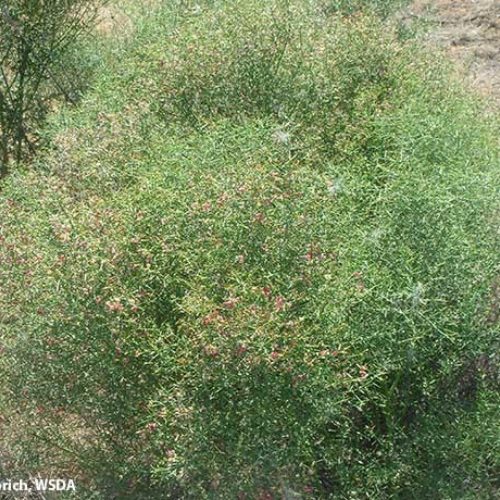Camelthorn
Alhagi maurorum
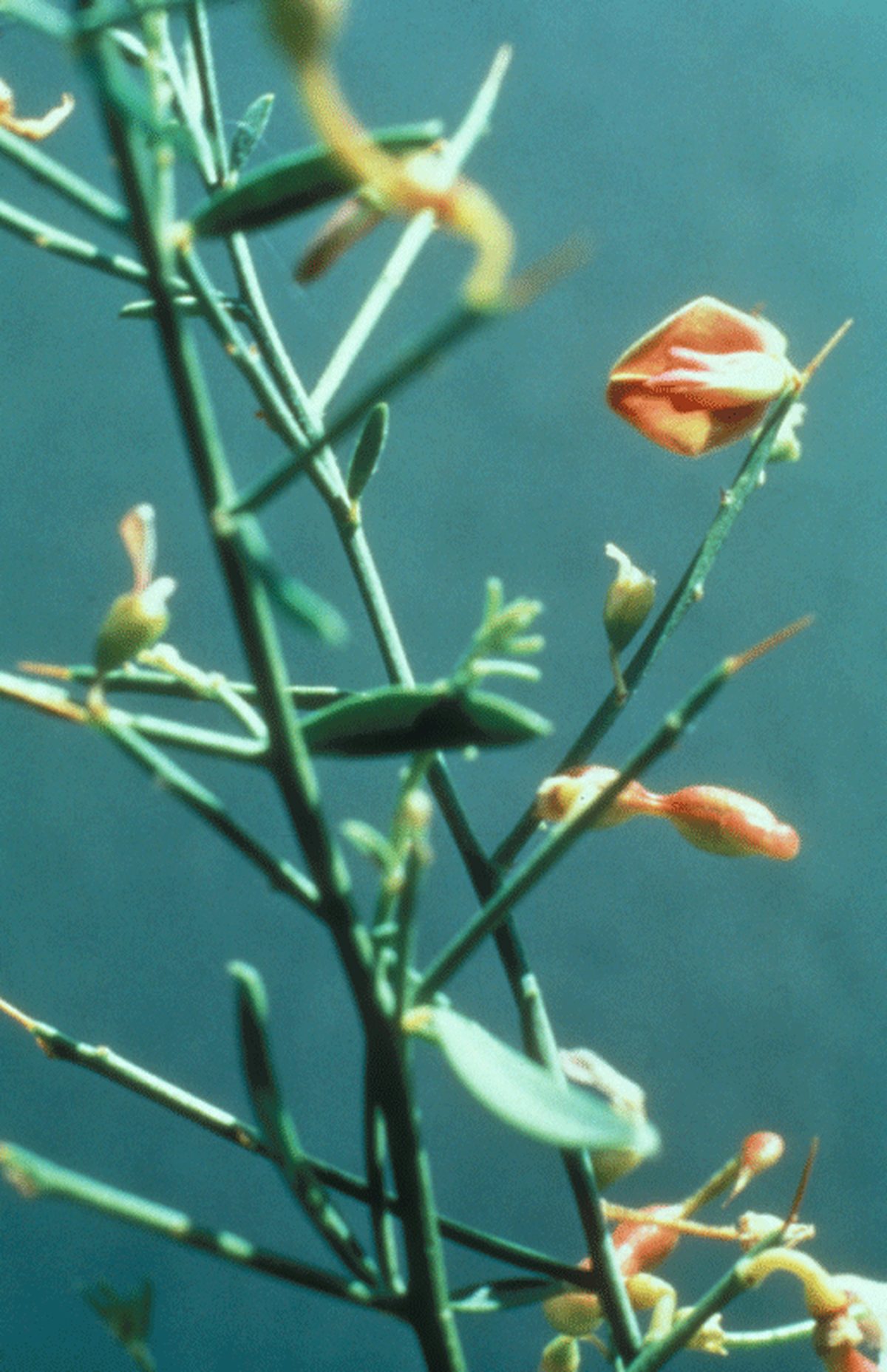
Family: Fabaceae
Weed class: B
Year Listed: 1988
Native to: Asia and Eastern Europe
Is this Weed Toxic?:
not known to be
Legal listings:
This plant is also on the Washington State quarantine list. It is prohibited to transport, buy, sell, offer for sale, or distribute plants or plant parts of quarantined species into or within the state of Washington or to sell, offer for sale, or distribute seed packets of seed, flower seed blends, or wildflower mixes of quarantined species into or within the state of Washington. Please see WAC 16-752 for more information on the quarantine list. For questions about the quarantine list, contact the Washington State Department of Agriculture's Plant Services Program at (360) 902-1874 or email PlantServices@agr.wa.gov.
Why Is It a Noxious Weed?
Camelthorn is unpalatable and injurious to some animals. Because of its deep root system, it grows successfully in dry, rocky, saline soil, making it weedy in rangeland, competing against preferred forage. It is also a potential alfalfa seed contaminant.
How would I identify it?
General Description
Camelthorn is a deep-rooted, rhizomatous, perennial shrub, with roots that can extend 6 to 7 feet into the ground. It is intricately-branched with spines and grows to 4 feet in height. It has pinkish purple to maroon flowers that bloom in the summer.
Flower Description
Flowers are pea-like and pinkish-purple to maroon. They are produced in clusters of 1 to 8 and are grouped toward the tips on spines or branchlets with spine tips.
Leaf description
Leaves are alternately arranged, grayish green and have smooth (entire) margins. They are oval to lance-shaped (much longer than wide with the widest part of the leaf below the middle).
Stem description
Branched stems are generally stiff and have short, spine-tipped flowering branchlets.
Fruit Seed Description
Reddish-brown to tan seed pods are constricted between seeds and have a short, narrow beak at the end.
Where does it grow?
Camelthorn mainly grows in deep moist soil, but it also occurs in dry, rocky, or saline soils. The plant is especially abundant along riverbanks, canals and irrigation ditches, but it can also spread into cultivated fields. Please click here to see a county level distribution map of camelthorn in Washington.
How Does it Reproduce?
Camelthorn reproduces by seed and rhizomes. Rhizomes can produce shoots 25 feet away from parent plant.
How Do I Control It?
Mechanical Control
If mechanical control is used, all rhizomes need to be removed to prevent fragments left in soil from re-sprouting.
Herbicide Control
Please refer to the PNW Weed Management Handbook, or contact your county noxious weed coordinator.
For More Information
See our Written Findings for more information about camelthorn (Alhagi maurorum).
UW Herbarium (WTU) image database information.
Weed report on camelthorn from the book Weed Control in Natural Areas in the Western United States



